The must-have kitchen gadgets time forgot
The march of kitchen progress has cast some entirely pointless gadgets into an evolutionary cul-de-sac, aka the back of the drawer: the grape scissors, the egg slicer, the strawberry huller. But have you seen these forgotten gems?
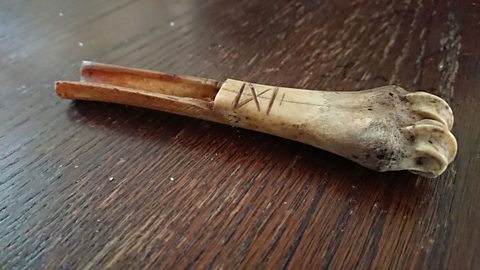 Image source, Emma Kay
Image source, Emma KayObsessed with your air fryer? Love your pressure cooker? Can’t live without your erm, , even though deep-down you know a fork is just as good? It’s fair to say that people love a kitchen gadget. But not every innovation is… progress.
For every food processor leap in evolution, there’s been a banana slicer (just use a knife), a rotary knife cleaner and a pickle picker, like one of those grabbers you get in arcades which reaches down for a toy, but in this case, a gherkin. (Again… fork?)
This isn’t a modern problem. For centuries, people have fallen for a technical marvel that lies gathering dust in the back of their drawers. Emma Kay, food historian and owner of the is an expert on kitchen gadgets of yesteryear.
“I have over three hundred items now. I started collecting about 15 years ago, when someone gifted me a range of 1950s Denby Greenwheat tableware, it just snowballed from there. It’s not only gadgets I collect, but all kinds of Kitchenalia, from spoons to spits. As a food historian I am always looking for that next tangible item that can connect me with the past.”
Emma told łÉČËżěĘÖ Food which historical food gadgets should make a comeback and which ones are best left in the past…
Portable kitchen tech to impress
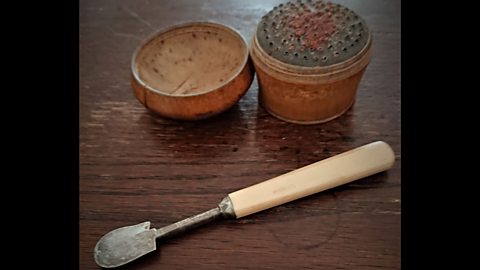 Image source, Emma Kay
Image source, Emma KayThe true gourmand is always prepared, as demonstrated by the smallest, portable items in Emma’s collection. “Two of my smallest items include a Victorian silver-plated orange peeler which is 12cm long and a couple of centimeters wide, like a small pen.
"Then there’s my portable nutmeg grater … which dates to the early 1800s." This was carried in a pocket so nutmeg could be (ostentatiously) added to drinks and puddings in company. Just imagine the look on the barista's face if you pulled this from your pocket and showed them your dedication to the freshness of spices. Impressive.
Related stories
Making a comeback?
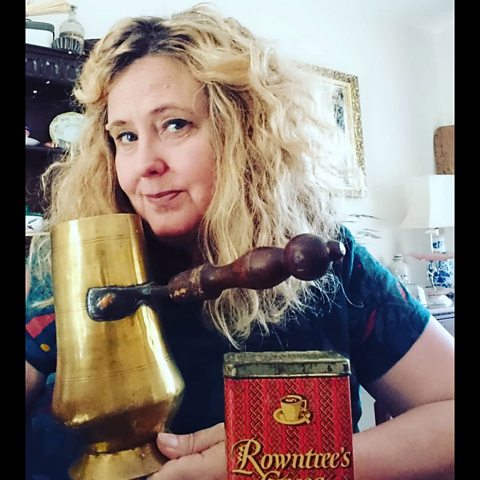
Some of the best ideas just coming back, like this brass forerunner of the "velvety" hot chocolate frother of today. “You fill it with chocolate that has been mixed with cold or hot water, put the lid on and vigorously froth the chocolate using a molinet (or stirrer). This was how you made chocolate in the 1700s and 1800s."
Of course, you'd also be grinding your own chocolate with an "Aztec blender", or metate. “A metate is a saddle-shaped grinding stone, originally developed by the Mexicans to grind down beans, grains and spices. The British had their own early medieval version … The way in which the metate differs is that it is heated underneath by a small fire/hot coals to melt roasted cacao nibs…"
"These devices were used in the kitchens of the wealthy in England in the 1700s. There are records of one being used in ."
Metates have been used for over 6,000 years in Mexico to grind maize flour for tortillas as well as chocolate and other foods. You won't catch them gathering dust at the back of the cupboard.
Making a comeback?

The good, the bad, and the oddly specific
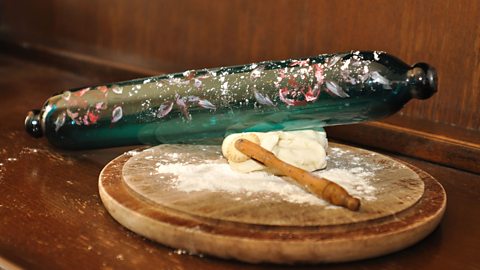
One beautiful item that hasn't quite caught on is still one of Emma's favourites, though perhaps not one for those with stylish concrete worktops. “There’s my hand-painted glass rolling pins, made in the Nailsea factory in Bristol in the mid-19th century. Glass rolling pins at this time had two purposes, some were highly decorative and were often gifted by sailors to their wives or sweethearts."
"Other standard glass pins were filled with ice to maintain a cold pastry.” Hang on, that's actual genius. We need one.
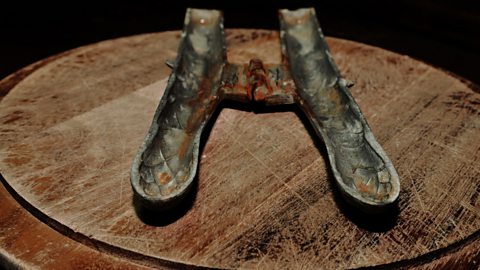 Image source, Emma Kay
Image source, Emma KayEmma isn’t convinced by every gadget in her collection. “Personally, I have never understood grape scissors, what’s wrong with just scissors? And objects designed to hull berries? I also have a particular dislike of egg yolk separators. It takes seconds using the shell of the egg,” she muses.
“The Victorian era was all about invention, technological advancement, and the growth of mass consumerism,” says Emma, which led to a boom in slightly rubbish gadgets.
“The Victorians loved their decorative ice moulds and chocolate moulds. Literally hundreds of different varieties, in all shapes and sizes were manufactured in the 19th and early 20th centuries. I have a range of these, but the most ineffective is an asparagus ice mould made by the famous French mould makers Létang Fils." Because who doesn't want asparagus-shaped ice?
But like many rubbish gadgets to follow, it doesn't work particularly well. "The asparagus mould is leaky due to its shape and the pattern cut into it is not deep enough to leave a proper impression. You just end up getting a blob of thin ice.”
Not every gadget deserves to be consigned to the historical dustbin. There were plenty of gadgets that were great at what they did but are no longer required. “A lot of older people remember the hand-held meat grinders, which were a big consumer product of the early twentieth century. These were used right up until the 1950s, as the best way to mince meat.”
The ones that got away
Unlike in our kitchen cupboards, there’s always room for a few more in Emma's collection. The Kitchenalia expert is desperate for one particular gadget: “Agnes Bertha Marshall’s patent ."
"Agnes was an amazing culinary genius, whose gadgets were pioneering. She ran one of the best and biggest, if not THE best and biggest cookery training schools in the world. She also manufactured her own range of cooking ingredients which she retailed in the shop within the training school, ran a domestic staff agency and wrote inspiring cookery books. Her early ice cream makers are rare and only come up for auction every now and then. If there’s anyone reading this who owns one, I’d be happy to negotiate!”
Published in February 2022